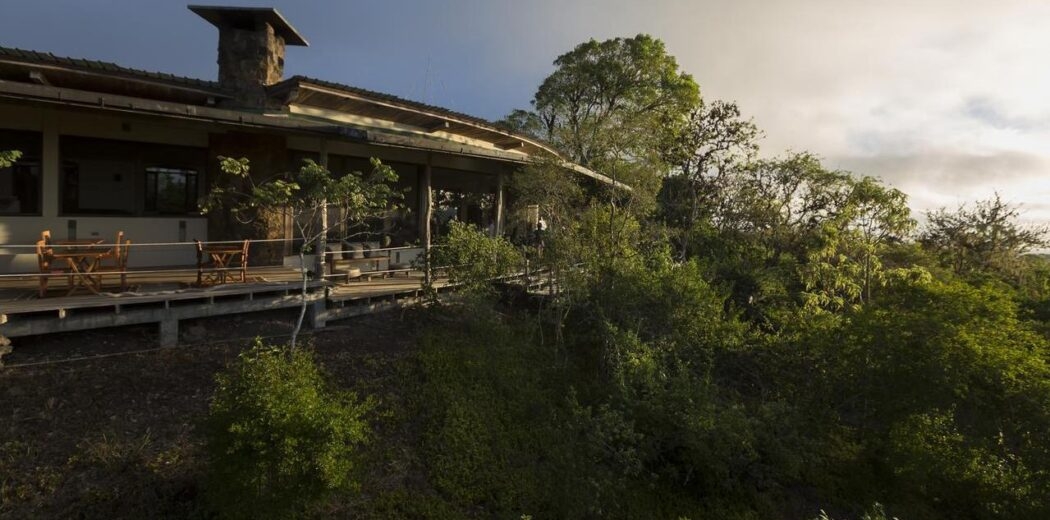Set nearly a thousand kilometres off the coast of Ecuador, The Galápagos Islands are a treasure trove of extraordinary wildlife and remote natural beauty. This archipelago is a dream destination for adventurous travellers, outdoor enthusiasts and animal lovers alike.
The Galápagos include 19 main islands and dozens of smaller islets, each of which offers its own unforgettable experiences. Here you can spot iconic species like giant tortoises and sea lions and learn more about Charles Darwin’s groundbreaking discoveries. You can also trek to the top of volcanic peaks or board a luxury yacht to cruise through the islands with ease – and that’s only the beginning.
Just in case you need more inspiration, here’s our ultimate guide to the Galápagos Islands.
How to get to the Galapagos Islands
The Galápagos Islands are one of the most isolated destinations on earth, so getting there might seem intimidating – but it’s surprisingly simple.
First, you’ll have to fly to Ecuador. If you want to spend some time exploring the country, we recommend flying into the capital city of Quito. It’s a vibrant metropolis with a fascinating historic centre, and you can easily catch a flight to the Galápagos from there.

Alternatively, you can fly through Guayaquil: Ecuador’s economic hub. While not quite as charming as Quito, this bustling city is the ideal departure point for a trip to the Galápagos. Flights from Quito always have a touch down in Guayaquil and this route takes around 3 hours and 45 minutes (including the stop in Guayaquil for refuelling and to pick up new passengers). Flights from Guayaquil to the Galapagos take around 2 hours. Either way, you’ll reach the archipelago in no time.
We recommend that you arrive in Ecuador at least 48 hours before your flight to the Galápagos, just in case there are any unexpected delays. In the meantime, there’s plenty to explore in Quito, Guayaquil and the surrounding areas – from exploring Incan ruins to sampling local cuisine.

How to get around the Galapagos Islands
Once you arrive in the Galápagos, getting around is relatively easy. The simplest option is to book a spot on a cruise that will take you around the islands. But if you’d rather be based on land, we suggest staying on one of the main islands like Santa Cruz or Isabela. From there, you can take excursions and day trips to other islands as well.
When it comes to moving between islands, you have a few different choices. You can take a passenger ferry that goes to the main islands, or opt for a faster and more exhilarating journey on a small speed boat. You can also fly around the archipelago via light aircraft.

Best time to visit the Galapagos Islands
Although they’re gorgeous all year round, the best time to visit the Galápagos Islands is from December to May. This season offers warm temperatures and mostly sunny days, creating ideal conditions for wildlife viewing, snorkelling, hiking and other outdoor activities.
That said, other times of year can be better for specific experiences. The colder season from June to November brings wind, rain and choppy seas – but it also attracts rare species of fish and birds. This is also a great time of year for snorkelling, if you can handle the colder water.
Ultimately, the best time of year for visiting the Galápagos will depend on your priorities. If you’re interested in seeing wildlife in general, you can’t go wrong. Most species here don’t have set breeding seasons, so you’ll always have the chance to encounter incredible animals. But if you want to see particular species, make sure to visit during the optimal time of year.
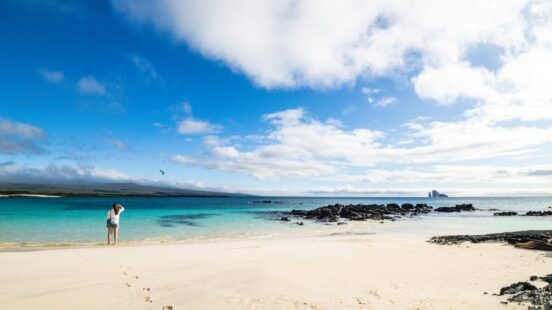
For example, the cooler months bring migratory whale sharks, while from January to May you’re more likely to spot hammerhead sharks and manta rays. If you’re an avid birdwatcher, April is a great time to visit; this is when you’re most likely to see the waved albatross and the mating rituals of blue-footed boobies and magnificent frigatebirds. To see the legendary giant tortoises, December to April is your best bet.
If you want to capture stunning photographs of lush green landscapes, you should plan to visit the Galápagos from January through to March. This is the wettest season, when temperatures start to rise. The misty skies of the cooler season remain – making for truly fantastic photo ops.
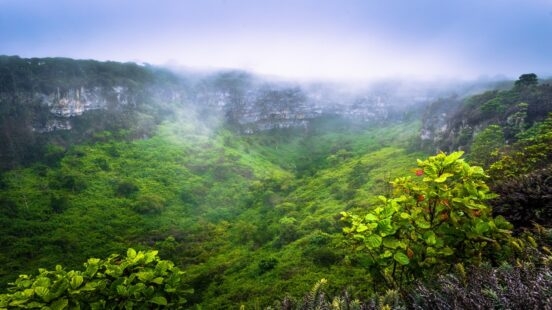
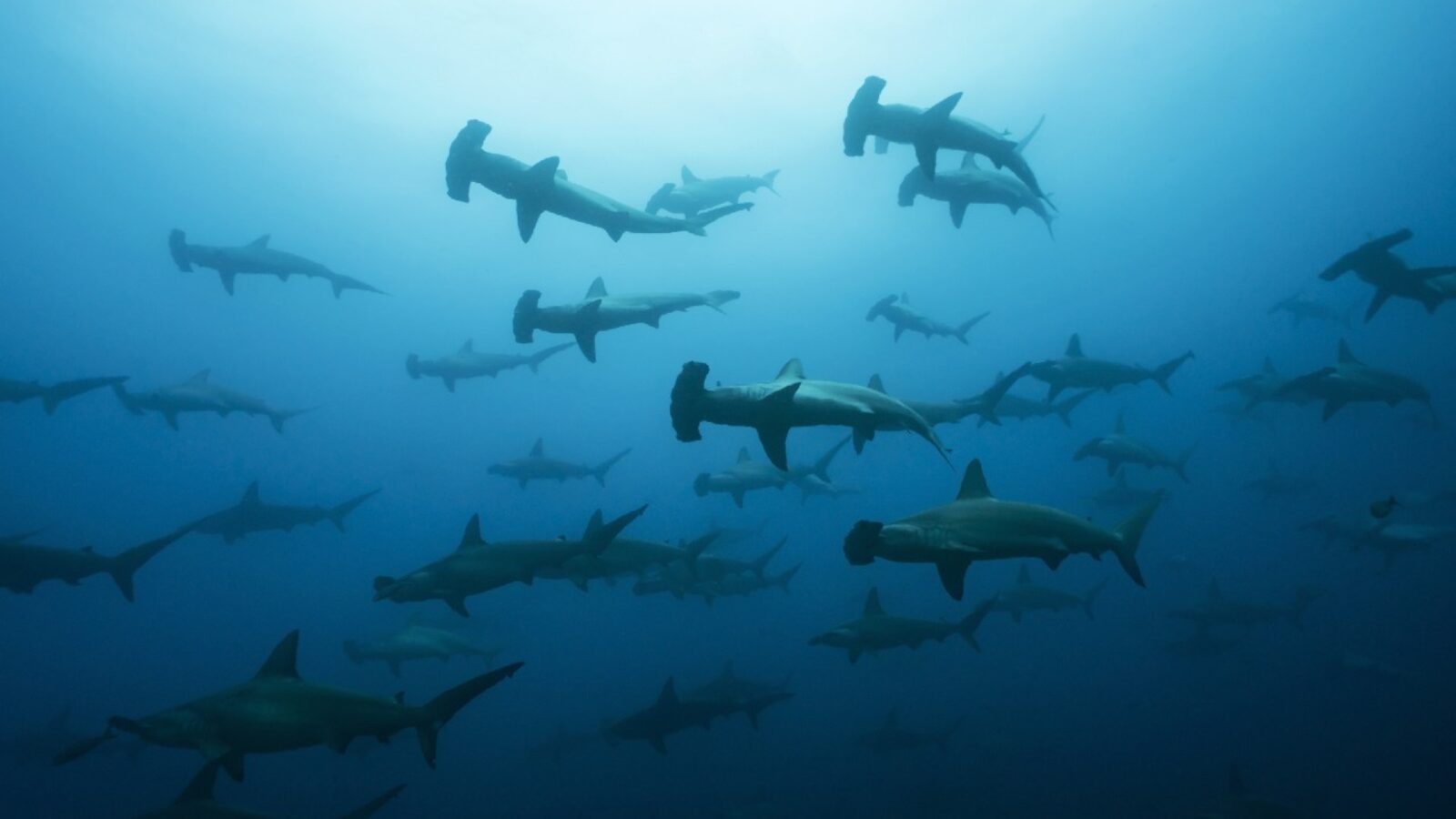
The Best Galápagos Islands Cruises
Exploring the Galápagos by land is exciting, but discovering them by sea is truly spectacular. Taking a cruise through the archipelago allows you to see more of the islands in a shorter amount of time – while adding an extra level of luxury to your trip. Here are a few of the very best cruises in the Galápagos Islands, from small yachts and catamarans to larger vessels.
1. Hermes Mega Catamaran
The Hermes Mega Catamaran is a contemporary, boutique vessel where adventure and luxury combine beautifully. There are just 12 spacious suites on board and several areas for dining, drinks, relaxing and nature talks. The food served on board is delightful, delicious Ecuadorian favourites combined with refined international dishes made with top quality ingredients.
We especially love the efforts made by the vessel to protect the islands. While onboard you’ll get the chance to learn about the support Hermes Mega Catamaran is giving to this exceptionally fragile and stunning marine environment through Via Natura’s Endemic Reforestation Program on Santa Cruz Island.

2. Endemic
The Endemic offers an incredibly exclusive boutique experience at sea. This luxury catamaran has just five en-suite cabins, each of which features large windows leading out to a private balcony. It has a fantastic outdoor dining area and sun deck, where you can relax on lounge chairs or take a dip in the jacuzzi. You’ll also have access to expert guides and gear for snorkelling and kayaking, allowing you to take full advantage of your surroundings.

3. La Pinta
With space for up to 48 passengers in its spacious staterooms. La Pinta strikes the perfect balance between exclusivity and extensive facilities. It’s also one of our top choices for a family trip to the Galápagos, with specialised programmes for families on certain dates and the option to book connecting rooms.
Like other top cruises in the islands, La Pinta offers small group nature walks, snorkelling and kayaking. It even has a glass-bottomed boat that allows you to see marine life without getting your feet wet – perfect for younger members of the family.

Galapagos Cruises
The Best Islands to Visit in the Galapágos
If we could visit each of the dozens of islands and islets that comprise the Galápagos, we would. But we also know this isn’t exactly practical for most travellers – at least not in one trip. And when it comes to choosing where to go, all of the options can start to feel a bit overwhelming.
Luckily, there are some standout spots that are especially good for certain attractions, activities and wildlife experiences. Here are our favourite islands to put at the top of your list.
1. North Seymour – Best for Birdwatching
The Galápagos Islands are a bird lover’s dream, but the tiny island of North Seymour – spanning less than two square kilometres – is an especially rich treasure trove of rare species. This is the best place to spot magnificent frigatebirds, with their bright red throat pouches and inky black wings.
The dry and arid island is also home to other fascinating species, like blue-footed boobies, swallow-tailed gulls and marine iguanas. Its low vegetation and abundant cacti create a unique landscape that’s ideal for observing its winged inhabitants. For the full experience, visit during the frigatebirds’ breeding season in March and April.
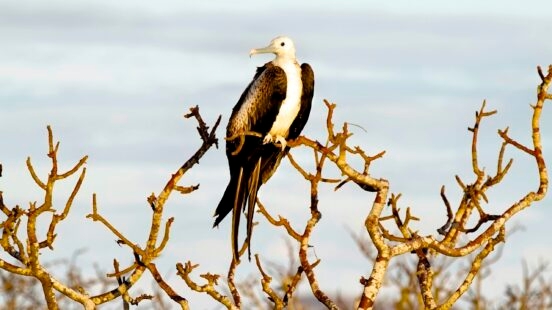
2. Rábida – Best for Dazzling Beaches
The island of Rábida is a strange and wonderful place, with otherworldly landscapes spread along its coastline. Here you’ll find not white, not black, but red sand beaches – a stunning effect of the high iron content found in the island’s volcanic material. These beaches are also home to friendly sea lions.
It’s worth venturing beyond the beaches to explore the island’s volcanic craters and cliffs, as well as its saltwater lagoon – a haven for fascinating birdlife. The resident flamingos may be the flashiest species around, but you’re also likely to spot Darwin’s finches, brown pelicans, mockingbirds, doves and warbles.

3. Floreana – Best for Diving & Snorkelling
The island of Floreana is an ideal destination for anyone who wants to discover the underwater world of the Galápagos. Divers and snorkellers from all over the world flock to the Devil’s Crown, a ring of jagged rocks off its coast where you can swim alongside hammerhead sharks, sea lions, sea turtles and more.
After exploring the rocks and coral, check out the historical landmark of Post Office Bay. In the 19th century, Floreana was a popular sport for whalers. They used to leave a wooden barrel at this bay with their letters inside, which passing ships would then pick up and deliver to the US and Europe.

4. Santa Cruz – Best Place to See Giant Tortoises
Perhaps the most well-known species of the Galápagos, giant tortoises are an absolute must-see – and Santa Cruz is the best place to spot them. Here you can get up close and personal with the tortoises at the Charles Darwin Research Station, or even encounter them in the wild. They don’t have any large predators here, so they’re not scared of humans at all.
Santa Cruz is a bigger island with the largest human population in the Galápagos, which makes it a great home base. In addition to giant tortoises, it offers endless outdoor activities like hiking, mountain biking, scuba diving and kayaking. We highly recommend Galápagos Safari Camp, a remote and luxurious lodge where you can disconnect from the outside world. The camp is also renowned for its eco-friendly initiatives and focus on sustainability.
Fun fact: The Galápagos Islands were supposedly named after these animals. When Spanish explorers first arrived and encountered the massive reptiles, they christened the island with the Spanish word for “tortoise” or “turtle”: galápago. (This word also means “saddle” – some say the tortoises’ large shells reminded the explorers of saddles.)

5. Isabela – Best for Volcanic Scenery
Isabela is the largest island in the Galápagos, and one of the most volcanically active places on earth. It’s made up of six staggering volcanoes – most of which are still active – creating jaw-dropping landscapes everywhere you look. Both Volcán Ecuador and Volcán Wolf are situated directly on the equator.
Wolf is the highest peak in the archipelago, at over 1,700 metres above sea level. It erupted in 2015 after 33 years of inactivity, and then again in January 2022. If you want to see it and the island’s other natural wonders up close, you can stay at the lovely Iguana Crossing boutique hotel. It’s the perfect jumping-off point for volcano treks, horse riding, picnics on the beach and much more.

6. Bartolomé – Best for Panoramic Views
If you’re looking for the ultimate view of the Galápagos, you’ll find it on Bartolomé. This small island measures just 1.2 square kilometres, and is located right in the centre of the archipelago. Climb to its summit for a panoramic view of more than 10 other islands at once.
After descending from the viewpoint, head to the base of Pinnacle Rock. Here you can swim and snorkel at the northern beach as you keep an eye out for the iconic Galápagos penguins, who like to play around the rocks. Other species like lava lizards, sea turtles, sharks, sea lions and stingrays are also common sightings.

7. Española – Best for Blue-Footed Boobies
In addition to being one of the oldest islands in the Galápagos, Española is home to an incredible variety of wildlife. It’s the best place to see the famous blue-footed boobies, who have a large nesting site here. You can also spot the fascinating Española mockingbird and the Galápagos waved albatross.
Española’s natural attractions aren’t limited to birdwatching. It has a unique marine iguana subspecies that remains red and green throughout the year – which explains why some call it the Christmas iguana. You’ll also find sea lions, lava lizards and plenty of other unique species. After visiting this island, it’s hard not to appreciate the mind-blowing biodiversity of this remote paradise.

Galapagos Island Camps
Our top Galapagos trips
Feeling inspired? Our Galapagos travel experts are always on hand to help you choose the right Galapagos adventure



-1050x520-f50_50.jpg&w=3840&q=100)



